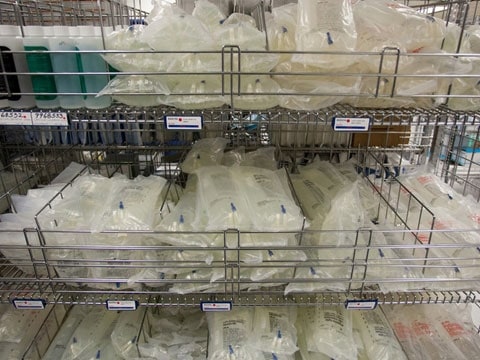
 What is the best way to clean a wound?
What is the best way to clean a wound?
A recent study published in the New England Journal of Medicine proves that cleaning wounds with saline solution is more effective than using soap and water.
Led by McMaster University in collaboration with the Research Institute of the McGill University Health Centre, the research looked at treatment outcomes for 2447 patients suffering from open fractures to an extremity such as an arm, leg or collarbone. The results showed that patients whose wounds were cleaned with soap and water prior to surgery were 32% more likely to require reoperation within 12 months than those whose wounds had been cleaned with saline.
“There has been a lot of controversy about the best way to clean the dirt and debris from serious wounds with bone breaks,” says Dr. Mohit Bhandari, principal investigator of the study and professor of surgery for the Michael G. DeGroote School of Medicine at McMaster University. “All wounds need to be cleaned out, but evidence shows that cleaning wounds with soap was not better than just water, which was unexpected.”
Conducted over a ten year span at sites within the United States, Canada, Australia, Norway and India, the study also looked at variations in water pressure to see if high pressure cleaning – currently the preferred method for wound cleaning – is more effective than low or very low (1-2 psi) pressure cleaning. The results showed no difference in rate of reoperation, again challenging common perception and practice.
These findings are likely to affect medical practices worldwide and result in lower rates of post-operative infections and complications. But the changes may have their biggest impact in the developing world, where health professionals can now look to cheaper, simpler methods for cleaning wounds.
The study found that 11.6% of patients whose wounds were cleaned with saline were in need of reoperation within 12 months, whereas 14.8% of those whose wounds were cleaned with soap and water were in need of reoperation, a significantly larger proportion.
Irrigation and wound cleansing practices have a long history, with everything from beer and wine to herbs, oils and turmeric being used at one time or another. During the 19th and 20th century, various antiseptic agents came in and out of fashion, including chlorine solutions, carbolic acid and mercurochrome, along with the rediscovery of the beneficial qualities of substances such as honey and sugar and the use of maggots for wound cleaning.
But in particular for surgical wound irrigation and cleansing the results of the present study are especially helpful, as major medical groups have been reluctant to offer official guidelines and recommendations on the practice of surgical irrigation.
Recently, the simpler choice was again shown to be the better option, this time for hand washing. A study concluded that antibacterial soaps containing triclosan – for many years the most common active ingredient in antibacterial soaps – were no better than regular soap and water at reducing bacterial contamination. In fact, the United States Food and Drug Administration warns that triclosan has been shown to alter hormone regulation in animals and is thought to contribute to making bacteria resistant to antibiotics.
Leave a Reply
You must be logged in to post a comment.




 Share
Share Tweet
Tweet Share
Share




Comment